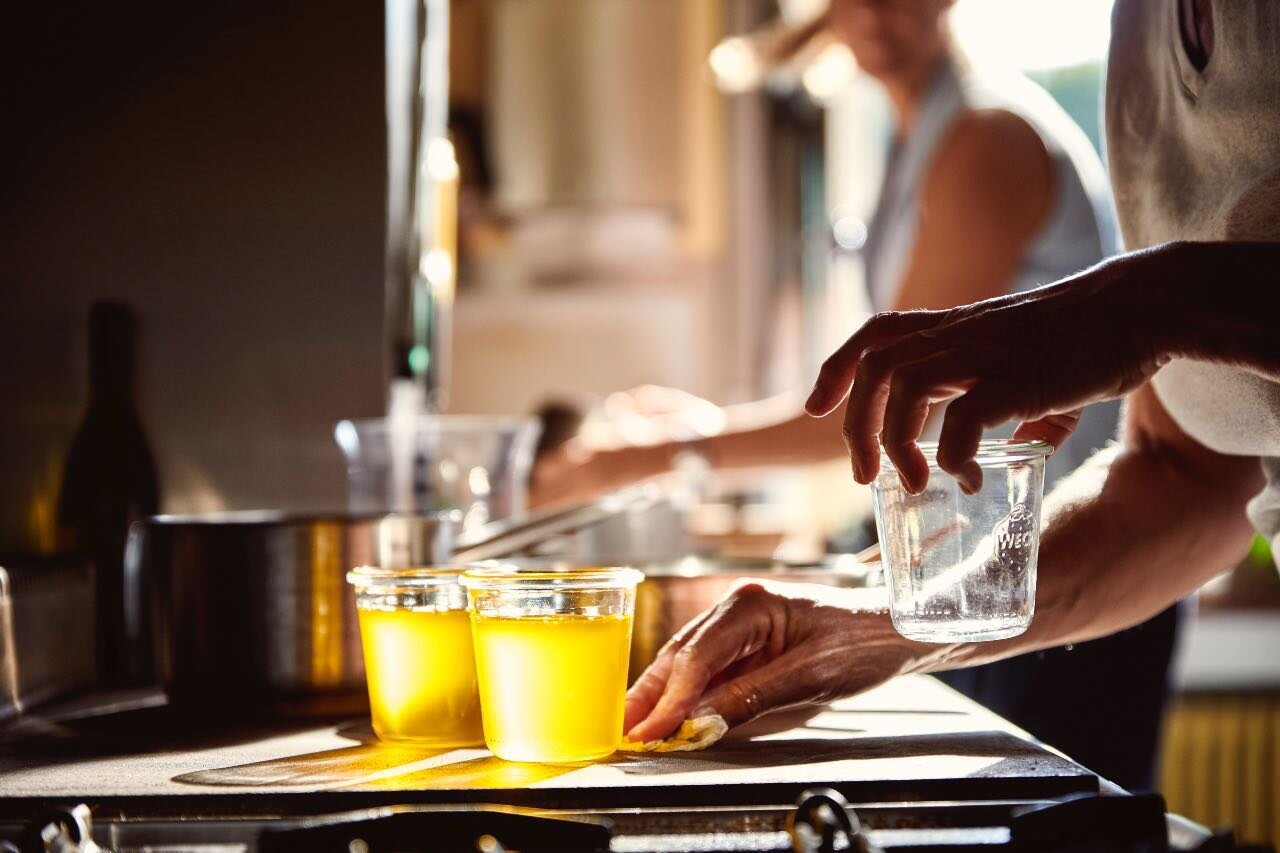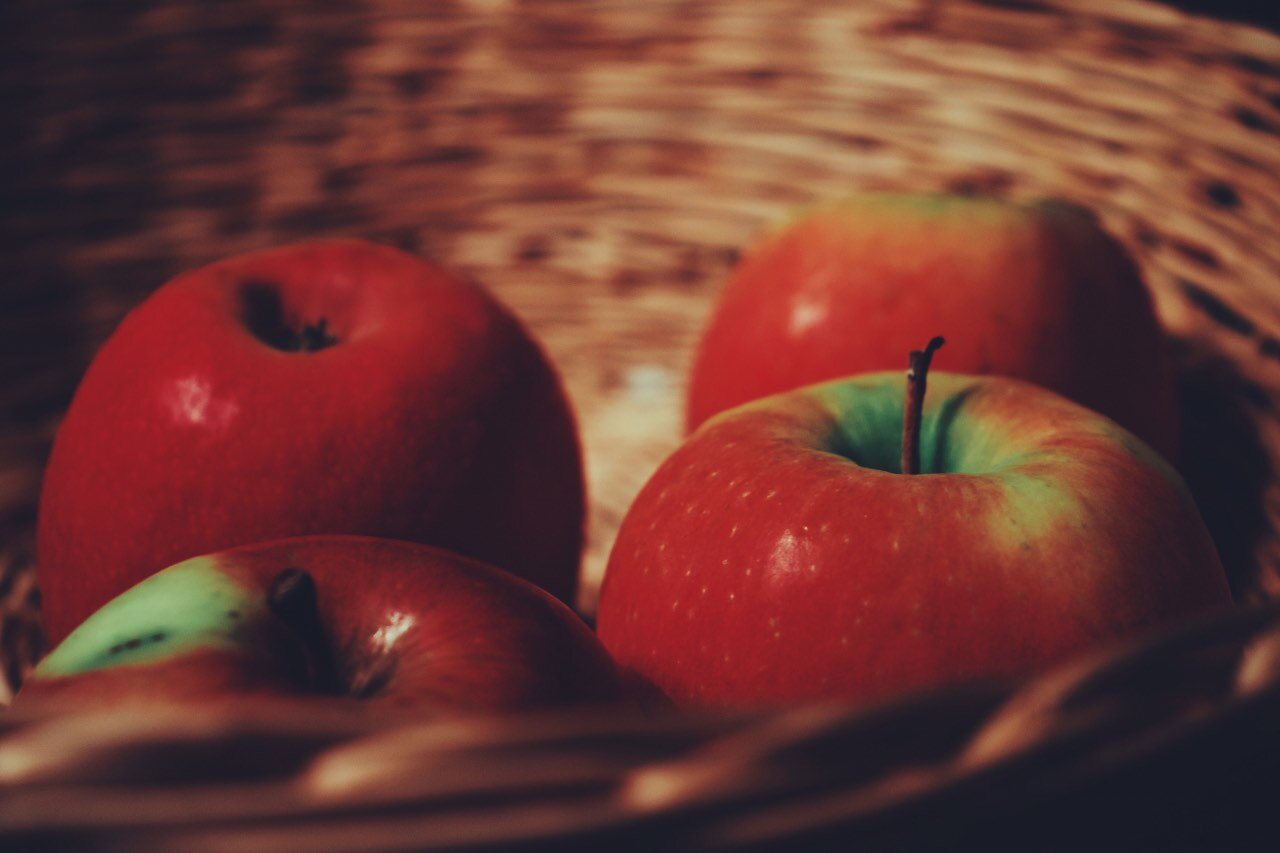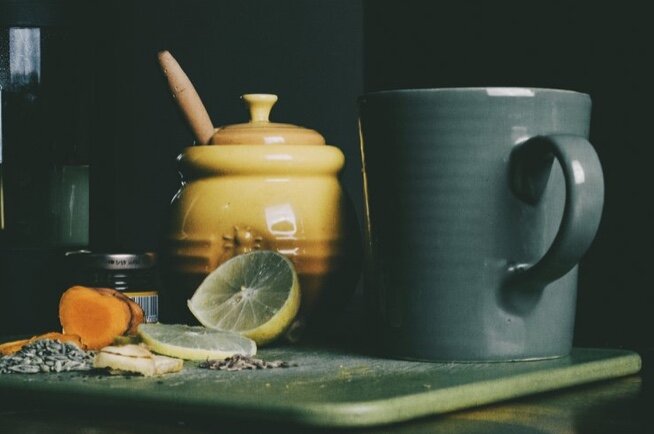ESCAPADA E-MAGAZINE
So often in our culture, imbalances (hormonal, digestive, emotional, sleep...) are due to very simple lifestyle habits and routines that are throwing us off-kilter. Because we practice these routines daily, our system gets out of whack and hormones off balance. When we have an understanding about what’s going on, we’re better equipped to make subtle lifestyle or dietary changes that will naturally correct and balance things over time. The beauty of this approach is, it’s all within your control and in your kitchen!
For Your Immune-System:
Garlic: In Chinese Medicine the lungs are responsible for the Wei Qi (immune system) as we breathe in sickness (i.e. colds and flus). Garlic is a powerful anti oxidant with antimicrobial, antiviral, and antibiotic properties and also works a natural decongestant to strengthen our lungs (and digestive system). At the first sign of an infection or illness, start taking one raw garlic clove daily, or use concentrated allicin extract.
Oregano Oil: In Chinese Medicine this oil has a long history of being used as an antimicrobial, antiviral, and anti-fungal medicine and is one of the most commonly used herbal remedies to strengthen the immune system. It can be taken internally as an all-natural antimicrobial powerhouse to keep your immune system going strong all winter, or to combat yeast infections and also be used topically to treat antibiotic-resistant staph infections of the skin (MRSA). If you don't have shop-brought oregano oil in your pantry you can make it at home using fresh oregano leaves but dried will work too!
Put 1 cup of freshly muddled oregano leaves into a jar and pour 1/2 cup of oil of your choice (we like olive oil for taste) over the leaves. Place the closed jar into hot water and allow it to sit for 10 minutes. This process heats up the oil and allows the oregano to release its natural oils. Remove the jar from the hot water and store in a cool place away from direct sunlight. The oil will need to infuse for at least 1 week, but ideally 2 with a shake/swirl every few days. When it is ready, it will be a rich dark brown colour, and you will need to strain the oil using a cheesecloth. Store the oil in a fresh glass jar with a tight fitting lid in the refrigerator and use as needed.
Turmeric: Turmeric has been prescribed in Chinese Medicine as a food and herbal remedy for thousands of years. The orange root is packed with pungent flavours of earth, pepper and bitterness and supports the function of your stomach and spleen. In TCM, turmeric acts as an anti-inflammatory to bolster the immune system by entering the heart, lung, liver and gallbladder meridians and is used to invigorate blood, remove stagnation from the body and reduce inflammation. We recommend always mixing turmeric with fat. It is a spice that is fat soluble, meaning that it can only be absorbed properly by the body when in combination with thats. This is why you will often find turmeric mixed with ghee (clarified butter) which is a delicious and healthy Ayurvedic and TCM substitution for butter. Using a pestle and mortar mash fresh turmeric root into a paste (or use powdered form) mix with ghee and use it in a multitude of savoury dishes.
For Digestion Issues:
The most important organs we look at for a strong and well functioning digestive system are the liver, spleen and stomach. So you need essentials that can help to regulate your whole digestive system:
Ginger: This pungent root is a powerful anti-histamine and decongestant that delivers a one-two punch against cold symptoms. In Chinese Medicine ginger also works to helps tonify your Qi (vital Energy) and Blood. Add in it's natural form to stir-fry dishes or boil it in water to make a cup of ginger tea with some added lemon and honey for a pleasant and healing hot drink.
Warm Water: According to ancient Chinese Medicine, drinking a glass of warm water in the morning helps kick-start the digestive system. Hot and warm water, because of its temperature, aids blood flow. As your blood circulation increases, it helps detoxify the body, reduce painful contractions of muscles and refresh the mind. If you are feeling sluggish, have cold limbs, a sore throat, suffer with menstrual cramps or abdominal bloating then opt for a glass of warm water as you wake up daily. It’s also a great alternative to coffee, especially in the second half of the day when you hit a low.
For Hormones, Cycles & Mood-Boosting:
Fresh Parsley Tea: Parsley is known to regulate the menstrual cycle and move Qi (vital energy) when we feel stuck. It also aids digestion and works to brighten the skin due to its detoxing and anti-inflammatory properties which in return boosts energy and clarity. In addition to these benefits, it helps to regulate water and eliminate toxins so prevents oedema due to water retention; Parsley does a cleaning job by effectively detoxing the liver, kidneys and bladder.
◦ Simply infuse a handful of fresh curly-leaf parsley in 3 cups of boiling water, add a slice of lemon, and leave it brew for 5 minutes. Remove the parsley and lemon and add 1tbsp of a natural sweetener of your choice and drink 1-3 cups per day. You can also add the parsley into your smoothies, soups or blended drinks to receive the benefits of the herb.
Goji Berries: High in antioxidants, Goji Berries boost the bodies blood and Yin to help with dry eyes, blurred vision, brittle nails, scanty blood flow and headaches after your cycle. Soak overnight and add to cooked oatmeal, make as tea or use as a substitute in anything you might normally use raisins or cranberries.
Chinese Angelica Root: In Chinese Medicine this phytoestrogen-rich root works to regulate and nourish the bodies blood, regulate your cycle and help with hormonal balance and menopausal type symptoms. Add to soups or stocks, or boil it in tea form with Goji Berries.
For General Well-Being:
Black Sesame Seeds: Great for dryness in the body such including your hair & scalp and body as they nourish the Yin (nourishing aspect) of the Liver and Kidneys in the body. Add a teaspoon to cereals, sautéed vegetables (roast it), baking (banana breads or power cookies to boost up the nutrient content), or add into your smoothies or blended drinks daily.
Manuka Honey: Manuka Honey is natural immune booster, natural anti-inflammatory agent, and antimicrobial agent. Used topically it has substances that can kill bacteria, and when ingested it can even work synergistically with antibiotics to improve their efficiency. We recommend adding 1tsp to warm water, teas or porridge in the morning for its ongoing immune-boosting properties.
Ghee: Used for thousands of years and a staple in Ayurvedic healing practices, ghee is one of the most healing foods for your body. Also known as clarified butter, it is a pure butter fat that has no protein, lactose, solids or sugars, meaning anyone with sensitive guts or lactose intolerance can eat it! Ghee contains a type of short-chain fatty acid called butyric acid which has a number of useful health functions. These include reducing inflammation in the digestive tract as well as supporting the health of the cells that line it. In addition, the fact content in Ghee is packed with fat-soluble vitamins, and itself is a direct source of fat-soluble vitamins (A, D, E and K). We love to use Ghee as a healthy alternative in all our cooking and as a condiment gut health, and even in our beauty regimes. If you don't have any in your pantry you can make it at home with our recipe here.
For Fatigue:
In Chinese Medicine moderate fatigue is generally caused by a deficiency of spleen Qi, the vital energy that circulates through your body. The spleen is responsible for the transformation from foods into Qi and blood, two vital substances that we need enough of in order to feel strong and resilient.
Insomnia Night Cap: If you are suffering from insomnia, this warming milk remedy will help strengthen the middle which works to calm the nervous system and body. Mix 1/2 cup of milk (almond/oat) with 1/2 cup of water in a saucepan and start to heat. Add a pinch of nutmeg and a dash of honey, nutmeg has a calming effect when consumed in smaller doses thanks to its sleep inducing and de-stressing effects. Once the mixture is combined and warm sip and enjoy.
Turmeric: Turmeric is revered in Ayurveda as an immunity booster, which also induces good sleep and relax the muscles. Turmeric tea, brewed using grated turmeric root or pure powder, is considered one of the most effective ways to consume the spice. Owing to its high anti-oxidant properties turmeric milk is very skin-friendly and regular intake can give you a healthy glow of radiance from within.
◦ How do you make Turmeric Milk? Add cold-pressed or powered turmeric to milk or coconut milk, and serve with a liberal sprinkle of cinnamon. Turmeric Milk, also known as golden milk can be drunk cold or hot and is our favourite Ayurveda health-elixir which also works as caffeine alternative for our morning pick me up!


























